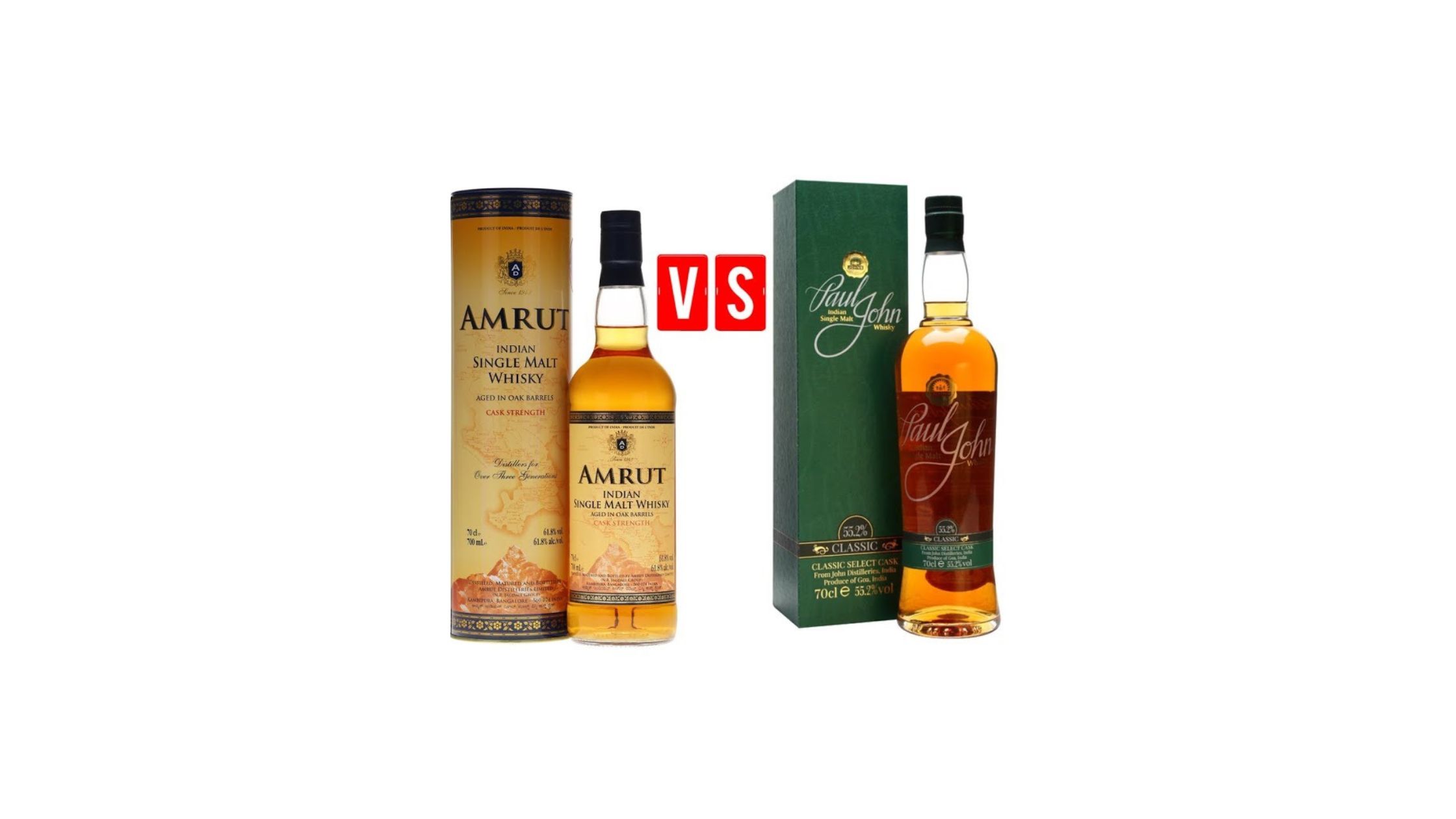Best Liquor Under ₹10,000 for a Perfect New Year 2026 Party
2025-12-05


Not long ago, if you said “great single malt whisky,” most people would instinctively think Scotland—or maybe Japan. But over the past two decades, India has quietly become one of the most exciting countries in the whisky world.
Indian single malts like Amrut and Paul John have gone beyond being a curiosity. They’re not “good for an Indian whisky.” They’re good, full stop.
What makes them stand out? For starters, Indian whisky matures faster due to the intense climate. Combine that with local barley, skilled distillers, and bold experimentation, and you get whisky that punches far above its age statement.
But even within this category, two distilleries stand out: Amrut, based in Bangalore, and Paul John, distilling out of sunny Goa. So, which one should you reach for?
Let’s break it down.
Amrut isn’t new to the scene—they’ve been around since 1948, but their first single malt only arrived in 2004. That late entry was worth the wait. Their distillery sits about 3,000 feet above sea level, where Bangalore’s dry heat works overtime on whisky casks. Some say whisky ages three times faster there than in Scotland. Whether or not that’s scientifically precise, the result is undeniable: intensely flavoured, concentrated whisky.
The name “Amrut” means “nectar of the gods,” which sets a pretty high bar—but they manage to back it up.
Distillery Highlights:
Fun Fact: The angel’s share (evaporation) can reach 12–15% per year. In comparison, Scotland loses about 2%. That's a huge difference in how quickly a whisky develops.
Paul John came onto the single malt scene later—around 2012—but made a splash fast. Based in Goa, the climate here is humid and coastal, meaning slower evaporation and a different kind of cask interaction. The result? Smoother, rounder whiskies that lean more toward tropical fruit and balance than spice and punch.
They use Indian-grown six-row barley, much like Amrut, but their fermentation and distillation process puts a bigger focus on texture and clarity. Peat is used, but subtly—never front and center.
Distillery Highlights:
Master Distiller Michael D’Souza is considered a major force in modern Indian whisky.
Read also: Top 7 Single Malt Scotch Whiskies: A Connoisseur’s Choice for 2025
Here’s how these two whisky makers stack up across key areas:
| Category | Amrut | Paul John |
| Founded | 1948 (Single Malt in 2004) | 1992 (Single Malt in 2012)Goa (humid, coastal) |
| Location | Bangalore (dry, high-altitude) | Goa (humid, coastal) |
| Barley Source | Indian 6-row + Scottish (Fusion) | Indian 6-row |
| Peat Usage | Moderate in some expressions (Fusion, Peated) | Subtle peat used for balance |
| Maturation Rate | Rapid (10–15% evaporation) | Slower (8–10% evaporation) |
| Flavour Focus | Spice, oak, tropical heat | Fruit, texture, balance |
| Popular Expression | Amrut Fusion | Paul John Brilliance |
Takeaway: If you like bold, spicy whisky with a lot of grip, Amrut is your jam. If you're after polish, finesse, and fruit-forward balance, Paul John delivers.
Let’s get into the glass. What do these whiskies actually taste like?
Amrut whiskies are not shy. Even their younger expressions pack serious flavour. Expect:
Amrut Fusion, arguably their flagship bottle, marries Indian and Scottish barley, including a touch of peat. You’ll get spice, fruit, dark chocolate, and smoke in one cohesive, full-bodied dram.
Read also: The English Distillery: Where England’s Whisky Renaissance Began
Paul John expressions are softer and more layered, with a texture that almost leans toward dessert. Look for:
Paul John Brilliance, for example, is unpeated and silky. A great starter bottle if you’re new to Indian whisky.
Here’s a quick guide to help you choose a starting point:
| Bottle | Amrut Fusion | Paul John Brilliance |
| Peat | Lightly peated (25% Scottish peated barley) | Unpeated |
| ABV | 50% | 46% |
| Profile | Spice, tropical fruit, chocolate, and smoke | Apple, honey, cinnamon, barley sweetness |
| Style | Punchy and layered | Clean and refined |
| Best For | Fans of bold Scotch or world whiskies | Bourbon drinkers or newcomers to single malts |
Both distilleries have put Indian whisky on the global map:
Bottom line? These whiskies are winning where it counts: with judges and everyday drinkers.
Still unsure? Here’s a quick decision guide:
You really can’t go wrong with either. It’s more about what mood you’re in—or what’s in your glass already.
Some fans describe Amrut as “a turbocharged Highland Scotch” while Paul John gets compared to “Balvenie with a tropical twist.” These aren’t clones of Scotch—they have their own rhythm, and that’s part of the charm.
If you hang out in whisky forums or Reddit threads, you’ll see both names spoken about with real affection. Many whisky lovers who try one end up exploring both.
Read also: 7 Common Whisky Distillation Myths—Debunked with Real Science
Amrut and Paul John aren’t rivals. They’re standard-bearers for Indian whisky. Each brings something unique to the table: one with power, one with precision.
So... which one should you choose?
The best way to find out is to taste them both. Try them side by side if you can. Better yet, bring a few friends and compare notes—it’s a lot more fun that way.